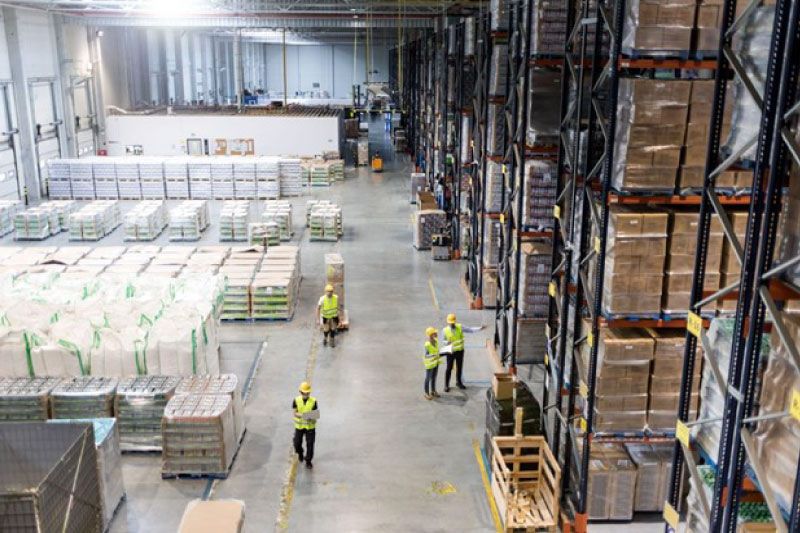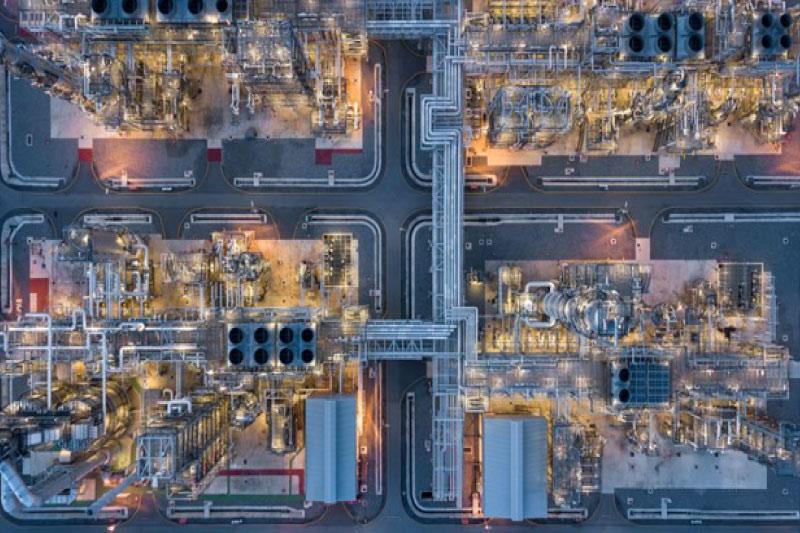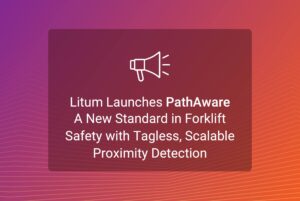Table of Contents
In the constantly evolving landscape of digital technology, enhancing workplace safety and efficiency has become more crucial than ever. At the forefront of this evolution is the Internet of Things (IoT), a technology interconnecting everyday objects and devices. IoT has extended beyond its initial buzz, impacting various aspects of life, from intelligent buildings and smart cities to the development of autonomous vehicles and drones. The core strength of IoT is its ability to facilitate connections and data sharing across devices, enabling real-time analysis and decision-making. This development in technology has provided new opportunities for optimizing operations, reducing costs and risks, and improving performance.
This blog post focuses on how IoT influences workplace safety and operational efficiency, particularly through the integration of Real-Time Location Systems (RTLS). RTLS, utilizing technologies like Ultra-Wideband (UWB), Global Navigation Satellite System (GNSS), and Wi-Fi, provides real-time tracking of assets and personnel. Its applications span across diverse industries such as manufacturing, healthcare, supply chain and logistics, and even challenging sectors like oil, gas, and mining.
By examining the practical applications and potential of IoT and RTLS, we aim to provide insights into how these technologies are currently shaping industries and what they hold for the future of workplace management.
Introduction to IoT and RTLS
The onset of the digital era has ushered in an array of notable innovations, among which the Internet of Things (IoT) stands as a cornerstone, altering our interaction with technology. IoT represents an intricate network of interconnected devices and systems, each communicating and exchanging data, thereby revolutionizing industries across the spectrum. From manufacturing to healthcare, IoT has been pivotal in crafting smarter, more efficient, and highly responsive operational environments.
Central to this technological revolution is Real-Time Location Systems (RTLS), a technology that is steadily redefining the parameters of efficiency, safety, and real-time interaction within the IoT landscape. At its essence, RTLS provides precise, real-time location data, a functionality that is indispensable in a wide array of applications. These range from intricate asset tracking in vast warehouses to ensuring personal safety in high-risk environments. RTLS’s role extends beyond mere location tracking; it is the linchpin in the complex machinery of IoT ecosystems. It plays a crucial role in enhancing decision-making processes, optimizing operational workflows, and effectively managing risks.
In essence, RTLS acts as a critical enabler within the IoT ecosystem, providing the real-time data necessary for systems to become not only interconnected but also intelligent and adaptive. As we continue to delve deeper into the IoT era, RTLS emerges as a key technological ally, driving innovation, enhancing safety, and streamlining operations in an increasingly connected world.

The Impact of RTLS in IoT Ecosystems
The integration of RTLS within IoT ecosystems represents a notable advancement in technology, introducing a new era of interaction and intelligence. This integration signifies a shift in how smart technology applications are conceptualized and implemented across various sectors.
RTLS embedded in IoT frameworks brings a unique level of dynamism and adaptability to these systems. It allows IoT systems to actively respond to real-time location data, transforming networks of devices into interactive systems capable of intelligent decision-making and autonomous actions.
1. Enhancing Efficiency
A critical contribution of RTLS in IoT is the improvement of operational efficiency, especially within industrial environments. By providing real-time tracking of assets and personnel, it optimizes workflows, minimizes downtime, and boosts overall productivity. This real-time visibility extends beyond tracking, as RTLS monitors asset conditions, enabling proactive strategies like predictive maintenance. This approach not only minimizes unplanned downtime but also extends equipment lifespan, resulting in substantial long-term cost savings.
RTLS-driven systems also contribute to workflow optimization by offering actionable insights into the movement and utilization of resources. Organizations can identify and address bottlenecks and inefficiencies in real time, allowing for streamlined processes and effective resource allocation. Additionally, the real-time tracking of personnel enhances safety and reduces human errors, particularly crucial in precision-focused industries.
2. Enhancing Safety
RTLS plays a central role in enhancing safety protocols across various industries, particularly in environments where risks are high, such as construction sites and manufacturing plants. By enabling real-time tracking of employee locations, RTLS provides a crucial tool for quickly identifying and responding to potential safety hazards, thereby mitigating accidents and ensuring compliance with safety regulations.
Complementing this, broader IoT technologies, including wearable devices, contribute significantly to workplace safety. These devices alert workers to immediate dangers, like proximity to hazardous areas or exposure to harmful substances. Together, RTLS and IoT wearables form a comprehensive safety system that reduces accident risks and improves the overall safety of work environments.
The integration of RTLS within IoT ecosystems signifies a key development in technology, shifting how smart solutions are implemented across industries. By enabling IoT systems to effectively utilize real-time location data, RTLS enhances operational efficiency and safety. From optimizing industrial workflows to improving safety protocols in high-risk environments, RTLS, in tandem with other IoT technologies, plays a vital role in refining and advancing the functionality of interconnected systems. This integration not only streamlines processes but also reinforces the importance of RTLS as a crucial component in the evolving landscape of IoT applications.
Real-World Applications of RTLS in IoT
The transformative impact of Real-Time Location Systems (RTLS) in the realm of IoT is evidenced by its diverse applications across several critical industries. Each sector leverages RTLS to address unique challenges, enhancing efficiency, safety, and overall operational effectiveness.

Manufacturing
RTLS is instrumental in enhancing both operational efficiency and safety in the manufacturing sector. It provides crucial real-time data on the location and status of equipment and personnel, enabling manufacturers to streamline production processes.
Beyond process optimization, a significant benefit of RTLS in manufacturing lies in improving workplace safety. The system’s ability to monitor the proximity of employees to forklifts and other lifting equipment plays a key role in mitigating accidents and ensuring adherence to safety protocols.
Furthermore, RTLS enhances overall operational management by allowing manufacturers to monitor machine performance in real time. This is essential for minimizing equipment downtime and optimizing production schedules. The tracking of materials, equipment, and personnel also helps in mitigating the risk of theft and boosting productivity.

Healthcare
In the healthcare industry, RTLS plays a crucial role in boosting operational efficiency and patient care. Utilized for tracking mobile medical equipment (MME), and pharmaceuticals, and monitoring staff and patient movements, RTLS ensures critical resources are available when needed, reducing care delays. It effectively manages patient flow, particularly in critical areas like Emergency and Operating Rooms, alleviating congestion and enhancing safety.
RTLS also streamlines the management of MME, providing instant alerts for unauthorized movements, thereby minimizing theft risks and improving equipment utilization. This leads to higher operational efficiency, reduces inventory costs, and ensures the availability of medical assets. Additionally, RTLS aids in care pathway optimization and resource planning, informed by data analysis, which further refines healthcare processes.
In summary, RTLS in healthcare not only improves resource management but also shapes a more organized and responsive care environment, directly influencing patient care quality and service efficiency.
Supply Chain & Logistics
In the realm of supply chain and logistics, RTLS significantly bolsters transparency and operational efficiency, particularly in the intricate processes of inventory management. RTLS stands out by offering detailed insights into the movement and location of goods throughout the entire supply chain. This comprehensive tracking is pivotal in enhancing inventory accuracy, reducing instances of overstocking or stock shortages, and ensuring that order fulfillment is both precise and efficient.
The adoption of RTLS in supply chain management goes beyond operational enhancement. It plays a key role in elevating the overall strategic planning, allowing businesses to gain deeper insights into supply chain dynamics. This data-driven approach leads to smarter decision-making, better resource allocation, and improved customer satisfaction by ensuring that the right products are available at the right time and place. As supply chains continue to evolve in complexity and scope, RTLS stands as a vital tool, reshaping traditional logistics practices and setting new benchmarks in supply chain efficiency and reliability.

Oil, Gas and Mining
The oil, gas and mining industries face unique challenges in monitoring and managing assets and personnel in often remote and hazardous environments. RTLS technology is instrumental in these sectors for ensuring the safety of workers and the efficient operation of equipment. In offshore oil rigs or remote mining sites, RTLS enables the tracking of personnel, ensuring that they are safe and accounted for, especially in emergencies.
It also assists in asset management, tracking the location and usage of expensive equipment, minimizing the risk of loss, and optimizing its utilization. Additionally, RTLS can provide insights into operational patterns, contributing to predictive maintenance and efficient resource management.
Essentially, the real-world applications of RTLS in the IoT ecosystem span across various industries, each reaping significant benefits from this technology. From enhancing production efficiency in manufacturing to ensuring patient safety in healthcare, optimizing supply chain operations, and safeguarding personnel in high-risk environments like oil, gas, and mining sites, RTLS is proving to be an indispensable tool in the digital transformation journey of these sectors. The adaptability and wide-ranging applications of RTLS underscore its potential to continue revolutionizing industry practices, driving innovation, and setting new standards in operational success.
Future of IoT and RTLS
Looking forward, IoT and RTLS technologies continue to advance at an exponential rate. In the future, the data insights provided by RTLS will become even more advanced, enabling businesses to make more informed decisions and improve safety and efficiency even further.
The growth of 5G networks and cloud computing is set to drive innovation in the IoT space by providing enhanced data processing power and connectivity, further advancing IoT and RTLS applications. The ongoing advancements in AI and machine learning are expected to integrate seamlessly with RTLS, leading to even more intelligent and autonomous systems.
These future developments promise to bring about a new level of sophistication in how RTLS is used within IoT ecosystems. From predictive maintenance to enhanced risk management, the possibilities are vast. This progress will not only refine operational efficiency but also open new avenues for safety and user engagement.




